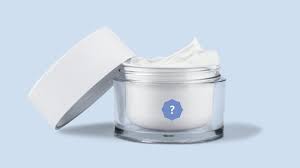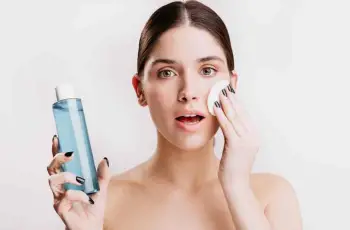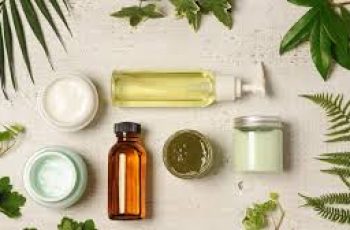
Coconut extracts are distinct from coconut oil. Glyceryl laurate, monolaurin, and lauric acid are derived from coconut oil. However, they possess very different properties.
The most significant difference is their comedogenicity. These coconut extracts are non-comedogenic. Coconut oil, in contrast, is comedogenic.
These specific coconut extracts have grown in popularity for skincare products. They are valued for impressive anti-inflammatory, antibacterial, and moisturizing properties.
These natural compounds show particular effectiveness. They can treat acne, inflammation, and sensitive skin concerns. This blog will explore why these coconut oil derivatives appear in acne skincare products.
This is true even though coconut oil itself is comedogenic.
To find the best products for your skin type, take our free quiz today! As a thank you for engaging with our educational content, use the code **STSblog20** at checkout.
This will give you 20% off your entire order!
**Key Benefits of These Coconut Derivatives:**
* Glyceryl laurate, monolaurin, and lauric acid are **non-comedogenic**.
* They are **safe for use during pregnancy and breastfeeding**.
* They exhibit **anti-microbial activity**. This includes efficacy against *C. acnes*, *S. aureus*, fungi, yeast, and *Malassezia* species.
* They help **reduce inflammation** by inhibiting pro-inflammatory pathways.
### Coconut Extracts in Skincare
Several types of coconut extracts are used in skincare formulations. The most common and research-backed ones are glyceryl laurate, monolaurin, and lauric acid.
If you’re generally seeking my favorite products containing coconut, a list will be provided.
#### Glyceryl Laurate
Glyceryl Laurate is a monoester. It forms from the combination of glycerin and lauric acid. It is a versatile ingredient. Skincare products frequently feature it.
This is due to its emollient, emulsifying, and antimicrobial properties. Both glyceryl laurate and lauric acid come from coconut oil. Their natural origin is evident.
They share many beneficial properties for skin care applications.
#### Lauric Acid
Lauric Acid is a medium-chain saturated fatty acid. It is extracted directly from coconut oil. It demonstrates strong antimicrobial activity. This is particularly effective against bacteria and fungi. In skincare, it is valued for its ability to penetrate the skin. It provides deep hydration. It also offers protection against various microbial invaders. Lauric acid is non-comedogenic.
This makes it suitable for both acne-prone and sensitive skin types.
#### Monolaurin
Monolaurin is a glycerol ester of lauric acid. It is considered a gentle compound. It is known for its anti-inflammatory and antibacterial properties. It effectively soothes the skin.
It also prevents irritation and itching. Such irritation can occur when microbes enter cracks in very dry skin. Monolaurin is often used in formulations. These aim to maintain overall skin health. They also work to prevent microbial infections without causing further irritation.
### Types of Products Featuring These Ingredients
Glyceryl laurate, monolaurin, and lauric acid are highly versatile. You can find them in a wide array of skincare products. These range from everyday cleansers to rich moisturizers.
VMV Hypoallergenics is a notable brand. It prominently features glyceryl laurate. This brand specializes in products for sensitive skin. It uses glyceryl laurate as a foundational ingredient.
It forms part of their allergen-free product lines.
#### Cleansers with Coconut Extract
In cleansers, glyceryl laurate, monolaurin, and lauric acid serve a key purpose. They help to remove impurities from the skin. Crucially, they do this without stripping away essential lipids.
This is particularly important for individuals with dry or sensitive skin. Harsh cleansing can exacerbate existing skin issues for these skin types.
#### Moisturizers with Coconut Extract
In moisturizers, these coconut-derived ingredients offer dual benefits. They provide essential hydration. They also help to repair the skin barrier.
Glyceryl laurate, monolaurin, and lauric acid work by replenishing the skin’s natural moisture levels. They also form a protective layer. This layer prevents water loss from the skin.
This dual action not only keeps the skin deeply hydrated. It also fortifies the skin. This makes it more resilient against environmental stressors, pollution, and potential irritants.
### Comprehensive Benefits of These Ingredients
The benefits of glyceryl laurate, monolaurin, and lauric acid in skincare are extensive. They are particularly valuable for those dealing with acne, sensitive skin, or inflammatory conditions.
These compounds provide a wide array of advantages. This makes them valuable additions to many modern skincare formulations.
#### Anti-Inflammatory and Soothing Properties
Inflammation is a common underlying cause. It contributes to many skin conditions. These include acne, eczema, and rosacea. Monolaurin and lauric acid help to reduce inflammation.
They achieve this by inhibiting the production of pro-inflammatory compounds. These compounds include cytokines.
Specifically, research shows these compounds suppress the expression of interleukin-6 (IL-6), interleukin-8 (IL-8), and tumor necrosis factor-alpha (TNF-α).
These are critical mediators in the body’s inflammatory response.
By blocking these inflammatory pathways, monolaurin and lauric acid help. They reduce the production of reactive oxygen species (ROS) and other inflammatory mediators. This, in turn, soothes irritated skin.
It reduces redness. It also prevents the exacerbation of various skin conditions.
#### Powerful Antimicrobial Action
Both monolaurin and lauric acid have demonstrated effectiveness. They work against *Cutibacterium acnes*. This bacteria is largely responsible for acne development.
Their antibacterial action helps to reduce the presence of this acne-causing bacteria on the skin. This minimizes the risk of breakouts.
Furthermore, these compounds are effective against other harmful microbes. These can contribute to various skin infections. They also significantly reduce levels of *Staphylococcus aureus* bacteria.
#### Hydrating and Moisturizing Effects
These compounds are excellent moisturizers. They help maintain the skin’s hydration levels effectively. By forming a protective layer on the skin, they prevent water loss.
This action keeps the skin soft and supple. This moisturizing effect is crucial. It benefits individuals with dry or sensitive skin. It helps to prevent skin cracking and irritation.
#### Non-Comedogenic Nature: A Key Advantage
One of the most significant advantages of monolaurin and lauric acid is their nature. In their purified forms, they are non-comedogenic. This means they do not clog pores.
This characteristic makes them exceptionally suitable for acne-prone skin types. While coconut oil itself can be comedogenic, the extraction process is vital.
This process for monolaurin and lauric acid ensures these compounds retain their beneficial properties. Crucially, they do so without causing any pore blockages.
### Safety Profile
Monolaurin and lauric acid are naturally derived from coconut oil. They are generally considered safe and “clean” ingredients. Skincare formulations widely use them.
This is due to their minimal risk of causing allergic reactions. Most individuals tolerate these ingredients well. This includes those with sensitive skin types.
The Environmental Working Group (EWG) rates glyceryl laurate as safe (1-3). There is currently no specific EWG safety rating for monolaurin or lauric acid.
Their safety profile is supported by their non-toxic nature. The existing literature also shows a lack of reported adverse effects. They are free from harmful chemicals. This makes them safe choices. They are suitable for women who are pregnant or breastfeeding. They provide clean, naturally-derived skincare options.
### Efficacy in Specific Skin Conditions
Monolaurin and lauric acid effectively treat a range of skin conditions. This is thanks to their potent antimicrobial and soothing properties.
These compounds are valuable in managing various common dermatological concerns. These include acne, rosacea, eczema, and yeast infections on the skin.
#### Acne Management
Acne is primarily caused by the proliferation of *Cutibacterium acnes* bacteria on the skin. Monolaurin and lauric acid help reduce the presence of these bacteria. This action prevents acne breakouts. Additionally, their anti-inflammatory properties help to reduce the redness and swelling associated with acne. This leads to clearer and calmer skin. These compounds are also effective against *Staphylococcus aureus*. This is another bacteria that can contribute to skin infections and acne flares.
#### Rosacea Relief
Rosacea is a chronic inflammatory skin condition. It is characterized by redness, flushing, and sometimes acne-like breakouts. Monolaurin and lauric acid may help manage rosacea.
They do this by reducing inflammation. They also potentially act against *Demodex* mites. These mites are often associated with the condition. *Demodex* mites can exacerbate rosacea symptoms.
The antimicrobial properties of these compounds help control their population on the skin.
#### Eczema and Barrier Support
Eczema, also known as atopic dermatitis, involves dry, itchy, and inflamed skin. The compromised skin barrier in eczema makes it susceptible to infections.
Monolaurin and lauric acid help prevent skin infections. They do this by reducing the bacterial load on the skin. Their moisturizing properties also help to repair the skin barrier.
This provides relief from dryness and irritation. By decreasing skin bacterial counts, these compounds help prevent secondary infections in eczema-prone skin.
#### Addressing Yeast Infections
Yeast infections can occur in various body areas. Common sites include under the breasts and in the corners of the mouth.
These infections result from an overgrowth of yeast, such as *Candida* species and *Malassezia* species. Monolaurin and lauric acid are effective against these yeasts.
This makes them useful in treating such infections. Cleansers and moisturizers containing these ingredients can help reduce the yeast population on the skin.
This provides relief from itching and discomfort associated with these conditions.
The best way to determine if products containing these coconut extracts are right for you is to take our scientific skin type quiz. Once you know your specific skin type, you can easily shop for skincare.
Simply look for your skin type octagon next to products that are ideal for your needs.


